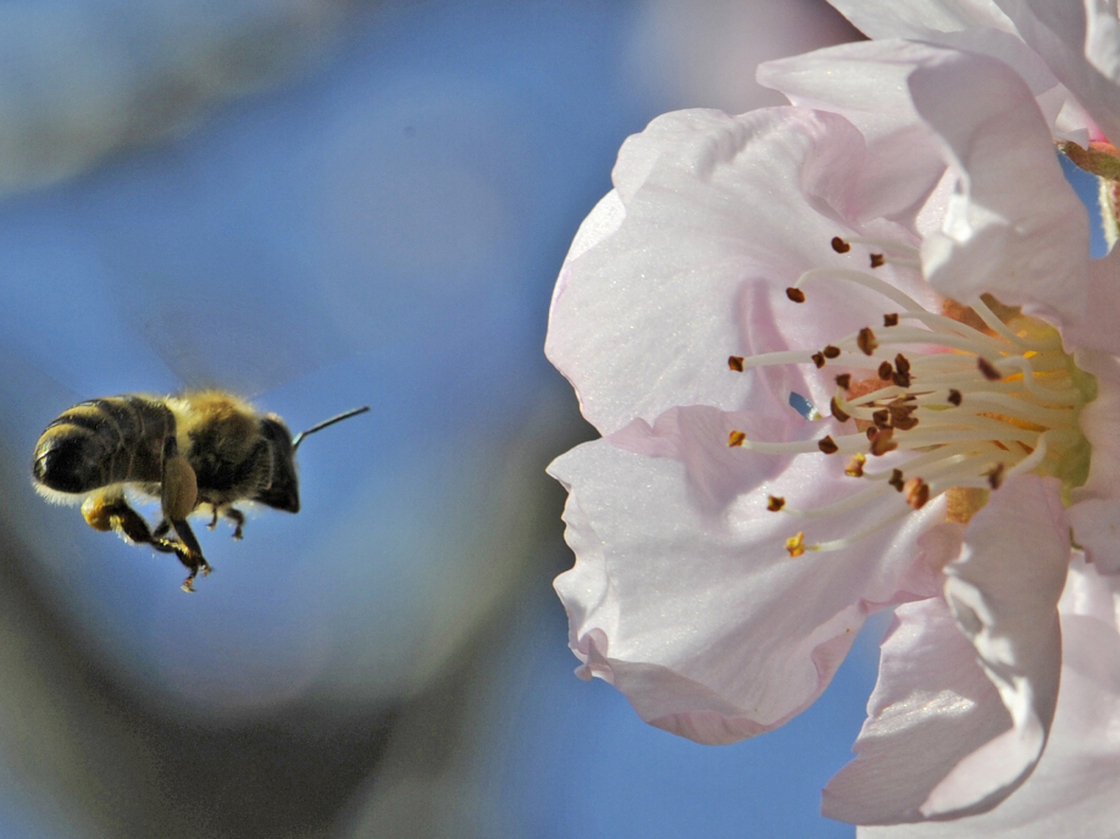In early March, I drive from Los Angeles to Monterey to attend a California Small Farm Conference. Interstate 5 connects the two cities. Leaving southern California, the freeway is a straight arrow heading north out of the Los Angeles metro area. Then the Tehachapi mountain range restricts the tidy flow of traffic for a while. Finally, the highway adds an extra lane and descends with sweeping curves into the broad and verdant Central Valley. On the valley floor near the city of Bakersfield, mile upon mile of almond groves flank both sides of the six-lane freeway. As yet, there are no leaves. Each tree in enveloped simply, in an exquisite cloak of white blossoms.
A typical California almond orchard varies in size between 20 and 400 acres. The orchards near Bakersfield appear to be at the upper end of the range. A row of 40 or 50 trees forms one leg of a plot. Dirt roads run at right angels back into the field and separate one sector from another. With this tree count, each section could contain up to 2,000 trees.
In 2013, California has 810,000 acres of almond orchards. The state has idea weather for almonds: a short, late winter chill and long hot summers. Perfect weather allows California to produce 75 percent of the world’s almond supply. California farmers added 20,000 acres of almond production in just one year, 2012. Miniature trees in adjacent fields represent future ambitions. With frail trunks sheltered from the blustery weather in two-inch plastic pipes angled to face the prevailing westerly winds, these young trees will begin to produce nuts in three to four years.
In 2013, California has 810,000 acres of almond orchards. The state has idea weather for almonds: a short, late winter chill and long hot summers. Perfect weather allows California to produce 75 percent of the world’s almond supply. California farmers added 20,000 acres of almond production in just one year, 2012. Miniature trees in adjacent fields represent future ambitions. With frail trunks sheltered from the blustery weather in two-inch plastic pipes angled to face the prevailing westerly winds, these young trees will begin to produce nuts in three to four years.
These almond groves demonstrates monocropping on a grand scale. We usually associate monocropping -- that is, the planting of substantial amounts of land to a single crop -- with corn, wheat, soybeans or cotton. Here, almond trees replace the more familiar fields of corn. Almond farmers face one problem, however, that does not trouble corn growers. Corn is a wind-pollinated crop. The natural breezes of summer carry corn pollen from plant to plant to create new kernels of corn. Almonds, on the other hand, require an insect intermediary, the honeybee.


No comments:
Post a Comment